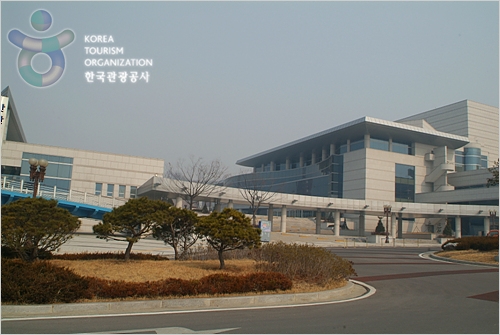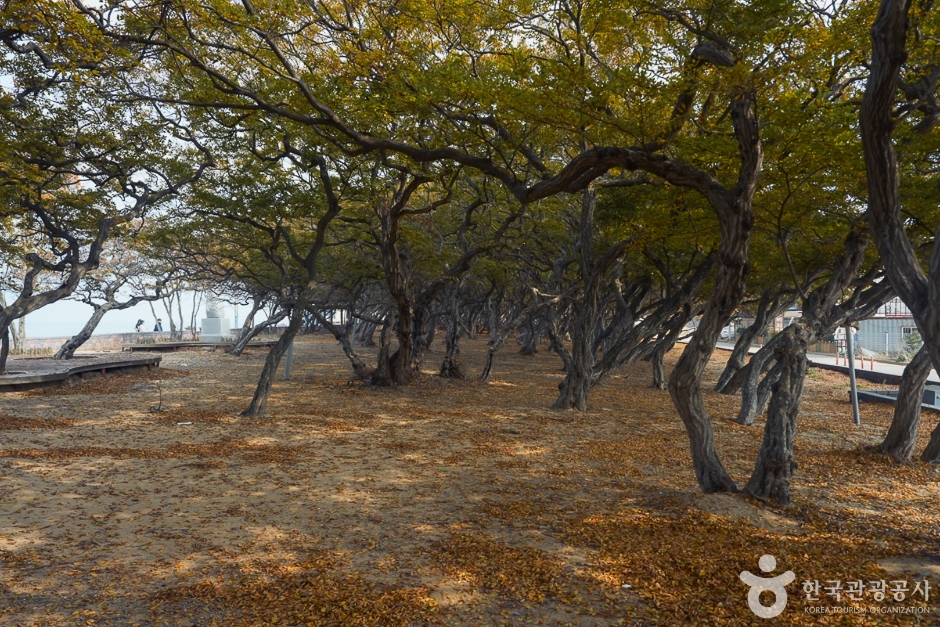Songa Myeonok (손가면옥)
18.0Km 2024-10-15
313 Sinheung-ro, Wonmi-gu, Bucheon-si, Gyeonggi-do
Established in 1994, Songa Myeonok is a renowned naengmyeon (cold buckwheat noodles) restaurant in Bucheon. Its signature dishes include bibim naengmyeon (spicy buckwheat noodles) and hoe naengmyeon (cold buckwheat noodles with raw fish). These dishes are celebrated for their chewy noodles and a refreshing blend of sweet and sour seasonings. Boasting a spacious parking lot and a comfortable interior, the restaurant is a popular choice for family outings and group gatherings.
Olive Young - Ansan Choji Branch [Tax Refund Shop] (올리브영 안산초지점)
18.2Km 2024-06-27
56, Gwangdeok 1-ro, Danwon-gu, Ansan-si, Gyeonggi-do
-
Ansan Arts Center (안산문화예술의전당)
18.2Km 2021-07-08
312, Hwarang-ro, Danwon-gu, Ansan-si, Gyeonggi-do
+82-80-481-4000
The Ansan Arts Center officially opened on October 2, 2004, following its success at the Ansan Yeormio Festival and Harmony Festival. The center boasts state-of-the-art stage facilities capable of holding any type of production orchestrated by Korean and international theater directors.
E-Mart - Gojan Branch [Tax Refund Shop] (이마트 고잔)
18.3Km 2024-04-22
46, Wonpogongwon 1-ro, Danwon-gu, Ansan-si, Gyeonggi-do
-
CU - Yeokgok Branch [Tax Refund Shop] (cu역곡점)
18.3Km 2024-06-27
45, Buil-ro 699beon-gil, Wonmi-gu, Bucheon-si, Gyeonggi-do
-
Incheon International Airport Spa On Air (인천국제공항 스파온에어)
18.4Km 2024-03-20
271 Gonghang-ro, Jung-gu, Incheon
+82-32-743-7042
Incheon International Airport Spa On Air is a premium spa and sauna located on the basement floor 1 of Incheon International Airport Terminal 1. Opened in December 2018, it is the world's first sauna built within an airport. With luxurious interior design and specially equipped cypress and red clay rooms, it offers a unique and relaxing experience. It's perfect for relieving fatigue after a long flight.
Himart - Gyesan Branch [Tax Refund Shop] (하이마트 계산점)
18.5Km 2024-04-16
791, Jangje-ro, Gyeyang-gu, Incheon
-
Olive Young - Yeokgok Station Nambu Branch [Tax Refund Shop] (올리브영 역곡역남부점)
18.5Km 2024-06-27
1F, 499, Gyeongin-ro, Sosa-gu, Bucheon-si, Gyeonggi-do
-
Olive Young - Bucheon Okgil Branch [Tax Refund Shop] (올리브영 부천옥길점)
18.5Km 2024-06-27
#101 and #102, 124, Okgil-ro, Sosa-gu, Bucheon-si, Gyeonggi-do
-
Hornbeam Habitat (서어나무(소사나무)군락지)
18.5Km 2024-02-16
Nae-ri, Yeongheung-myeon, Ongjin-gun, Incheon
Hornbeam Habitat stands as the largest colony of hornbeam trees in Korea, home to over 350 trees that have surpassed the 150-year mark. These trees were initially planted by the residents of Naeri village to shield their rice fields from the harsh impacts of rain and wind. Subjected to the relentless sea breeze, the branches of these hornbeam trees have been sculpted by nature to twist and turn, veering away from the typical straight growth pattern. This interaction between the natural elements and the trees' adaptive growth has resulted in a landscape of unique beauty.


![E-Mart - Gojan Branch [Tax Refund Shop] (이마트 고잔)](http://tong.visitkorea.or.kr/cms/resource/13/2888213_image2_1.jpg)
![Himart - Gyesan Branch [Tax Refund Shop] (하이마트 계산점)](http://tong.visitkorea.or.kr/cms/resource/04/2882404_image2_1.jpg)

 English
English
 한국어
한국어 日本語
日本語 中文(简体)
中文(简体) Deutsch
Deutsch Français
Français Español
Español Русский
Русский